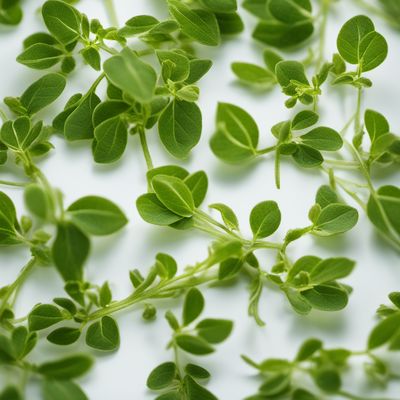
Ingredient
Bitter orange infusion leaves
The Zesty Elixir: Unveiling the Power of Bitter Orange Infusion Leaves
Bitter orange infusion leaves are prized for their aromatic qualities and are commonly used to infuse beverages, desserts, and savory dishes with a distinct bitter orange essence. These leaves are often steeped in hot water to create a fragrant tea or incorporated into recipes to impart a delightful citrusy note.
Origins and history
Bitter orange infusion leaves have a rich history dating back to ancient times, where they were cultivated in regions like the Mediterranean and Asia. They have been used in traditional medicine and culinary practices for their potential health benefits and flavor-enhancing properties. Today, these leaves are widely appreciated in global cuisines for their unique taste and aroma.
Nutritional information
Bitter orange infusion leaves are not a significant source of nutrients, but they contain essential oils and antioxidants that contribute to their potential health benefits. They are low in calories and fat, making them a suitable addition to a balanced diet.
Allergens
Bitter orange infusion leaves may cause allergic reactions in some individuals, particularly those with citrus allergies. It is advisable to exercise caution and consult with a healthcare professional if you have any concerns or known allergies.
How to select
When selecting bitter orange infusion leaves, look for fresh, vibrant leaves that are free from blemishes or discoloration. Opt for organic or pesticide-free options whenever possible to ensure the highest quality and minimize potential chemical residues.
Storage recommendations
To preserve the freshness and flavor of bitter orange infusion leaves, store them in a cool, dry place away from direct sunlight. Consider placing them in an airtight container or resealable bag to prevent moisture loss and maintain their aromatic qualities. Use them within a reasonable timeframe to enjoy their optimal taste and fragrance.
How to produce
Bitter orange trees can be grown in regions with a Mediterranean climate or similar conditions. They require well-drained soil, ample sunlight, and regular watering. However, cultivating bitter orange trees solely for their leaves may not be practical for most home gardeners.
Preparation tips
Bitter orange infusion leaves can be used in various ways, such as steeping them in hot water to create a refreshing tea, infusing them in syrups or spirits for cocktails, or incorporating them into desserts like custards, ice creams, or cakes. They can also be used as a flavoring agent in savory dishes, such as marinades or dressings.
Culinary uses
Bitter orange infusion leaves are commonly used in Mediterranean, Middle Eastern, and Asian cuisines. They are particularly prevalent in Spanish, Moroccan, and Thai dishes, where they add a distinctive citrusy and bitter note to traditional recipes.
Availability
Bitter orange infusion leaves are cultivated in regions with a Mediterranean climate, including Spain, Morocco, Italy, and parts of Asia. They can be found in local markets or specialty stores in these areas. Additionally, they are available for purchase online, allowing individuals worldwide to enjoy their unique flavor and aroma.
More ingredients from this category » Browse all

Sweet trefoil infusion leaves
The Delicate Herbal Elixir

Muña infusion leaves
Andean Mint Delight

Knotgrass infusion leaves
The Herbal Elixir: Knotgrass Infusion Leaves

Common vervain infusion leaves
The Healing Power of Common Vervain

Hairy rupturewort infusion leaves
The Herbal Elixir: Unveiling the Magic of Hairy Rupturewort Infusion Leaves

Fumitory infusion leaves
The Herbal Elixir: Unveiling Fumitory Infusion Leaves

Ribwort plantain infusion leaves
The Healing Herb: Harnessing the Power of Ribwort Plantain

Mulberry (black and white) infusion leaves
The Versatile Mulberry

Alfalfa infusion leaves
The Green Powerhouse: Alfalfa Infusion Leaves

Eucalyptus infusion leaves
Refreshing Eucalyptus: Aromatic Leaves for Infusions

Tea tree infusion leaves
"The Healing Elixir: Unveiling the Power of Tea Tree Infusion Leaves"

Eyebright infusion leaves
The Visionary Herb: Exploring the Benefits of Eyebright Infusion Leaves